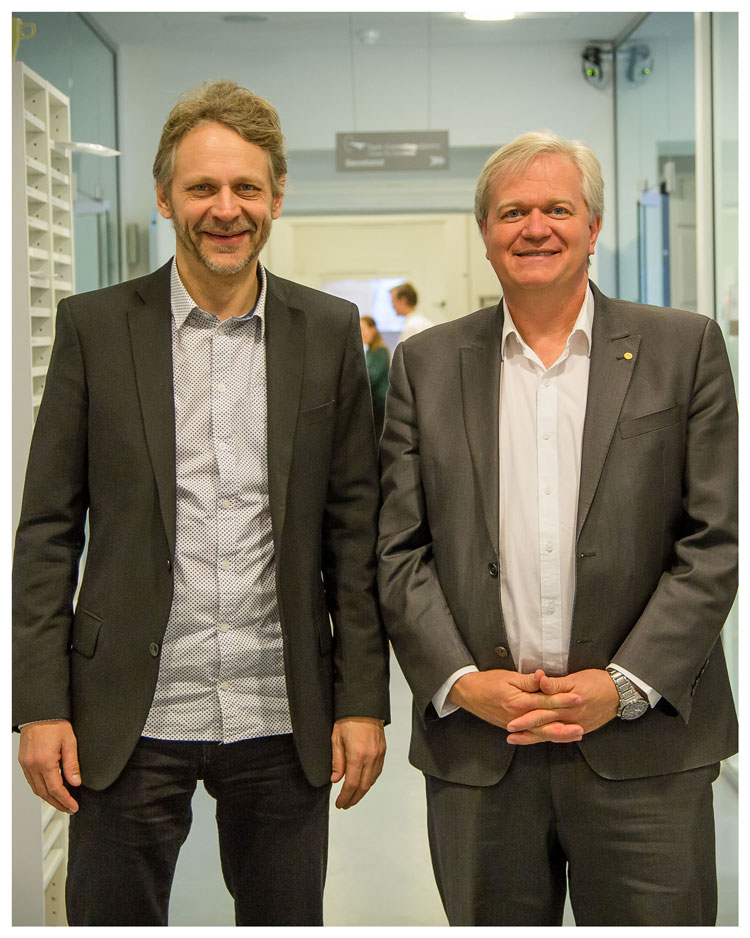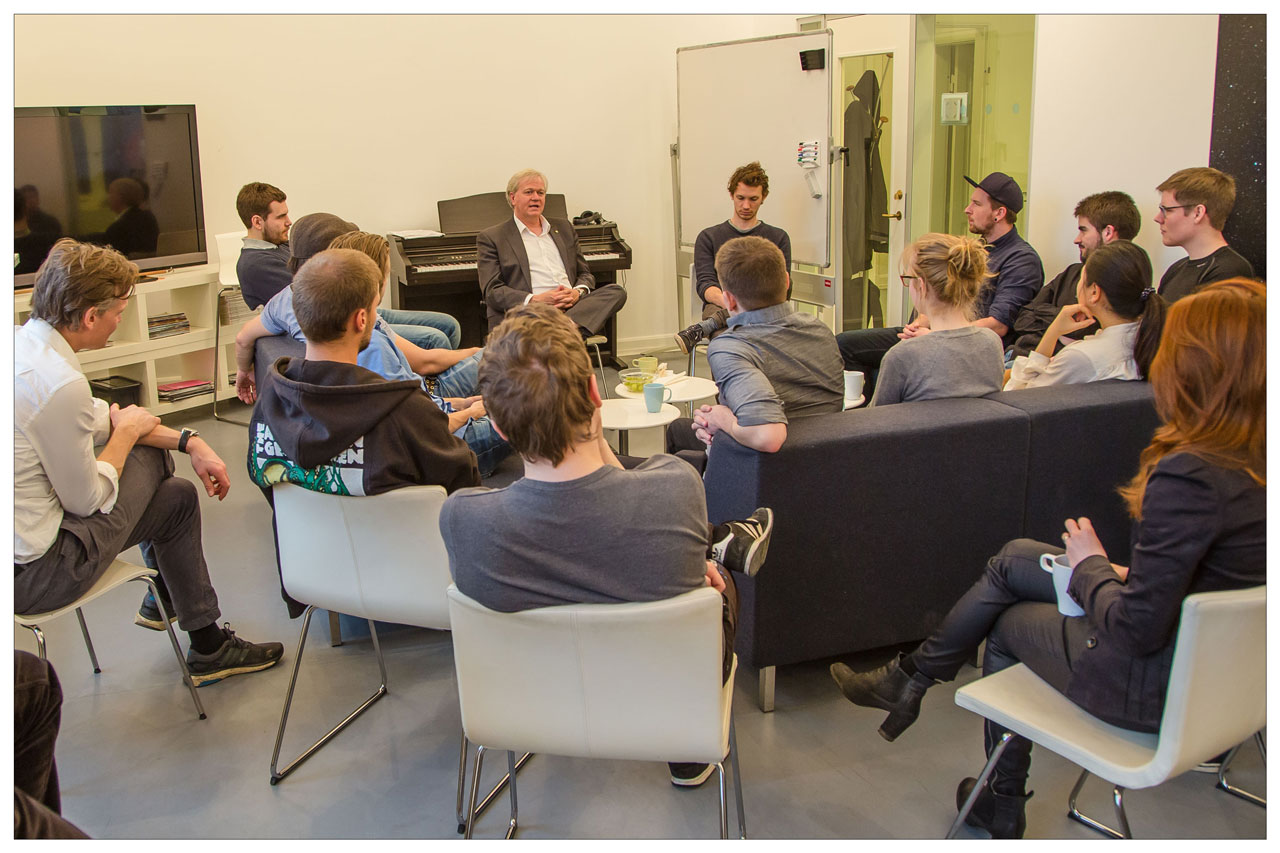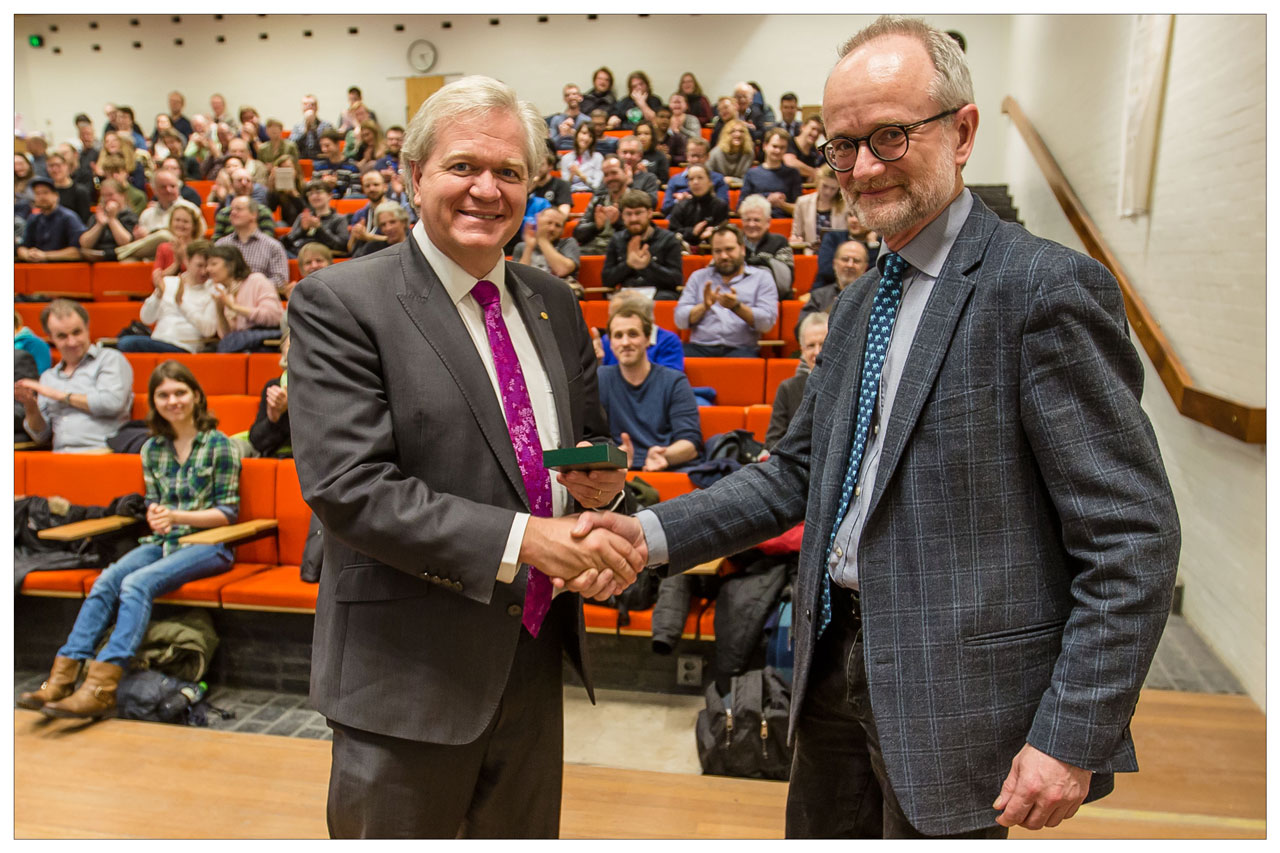Brian Schmidt receives the Niels Bohr Institute Medal of Honour, 2015
Brian Schmidt, Professor of astronomy and Vice-Chancellor of Australian National University, has been awarded the Niels Bohr Institute Medal of Honour, 2015. Brian Schmidt studies supernovae (exploding stars) and gamma-ray bursts, which are violent eruptions of gamma rays. He also works with the project SkyMapper, which will map the stars and galaxies of the southern hemisphere using a new telescope.

Measuring distances in the universe is standard astronomy and in order to measure the distances you need standard light sources that you can base your measurements on. Such light sources can be supernovae.
Supernovae are exploding stars and they are divided into categories according to the type of exploding stars. But Brian Schmidt and a team of researchers discovered that something did not quite add up.
This led to a breakthrough in our knowledge about the accelerating expansion of the universe.

The accelerating universe
“In 1994, Brian Schmidt helped form a research team comprised of 20 astronomers studying distant supernovae using the largest telescopes on Earth. They took spectra of supernovae and it turned out that the light from the supernovae was weaker than expected.
Distances in the universe described by a so-called redshift, which is the change in the wavelength of the light due to the movement of the object, and the redshift showed that the supernovae were quickly moving farther away.
In fact, they had expected that the expansion of the universe would be slower because of gravity, but now they discovered on the contrary that the expansion of the universe was accelerated.
The group’s discovery of an accelerating universe was named “Breakthrough of the Year” in 1998 by Science Magazine,” says Jens Hjorth, Professor and head of the Dark Cosmology Centre at the Niels Bohr Institute.
Jens Hjorth explains that this discovery triggered an ocean of research activity around the world to unravel more about the dark energy is thought to be what is driving he universe to expand at an accelerating rate. Dark energy is believed to function as a kind of vacuum that pulls the universe outwards, while the gravitational force tries to pull it together.

From Alaska to Australia
Brian Schmidt grew up in Montana and Alaska, USA. He received a bachelor in both physics and astronomy from the University of Arizona and a MA (1992) and PhD (1993) in astronomy from Harvard University.
In 1995, Brian Schmidt started working at Australian National University, where he was appointed Vice-Chancellor last year. He has received several major awards and in 2011 he, along with Adam Riess and Saul Perlmutter, received the Nobel Prize in Physics for his work on the accelerating universe.
In recognition of his important work, Brian Schmidt will now be awarded the Niels Bohr Institute Medal of Honour, 2015.

“I am extremely honoured to be chosen for this award. Bohr is the physicist I most aspire to be like - I am afraid some aspirations remain stretch goals for one's entire life,” says Brian Schmidt modestly.
A new project he is working on is SkyMapper, which can observe a large area of the sky at the same time using smaller telescopes. This way you both record all galaxies and map the distances and the structure of the universe. In addition, you can look for asteroids that are heading towards the Earth and manage to avert a collision.
Brian Schmidt was awarded the medal of honour at a ceremony at the Niels Bohr Institute in Copenhagen on 29 January.

Brian Schmidt, Professor of astronomy, The Research School of Astronomy and Astrophysics, The Australian National University, Weston Creek, Australia, 61 (0)2 6125 804, BP.SCHMIDT@anu.edu.au
